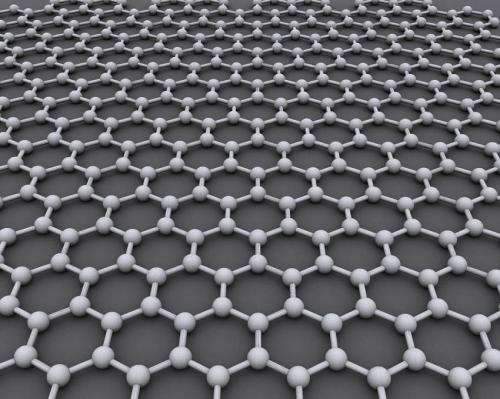Visualising nanoscale changes in the electronic properties of graphene

NPL's Quantum Detection Group has recently published a study in Scientific Reports that casts a new light on the electronic properties of quasi-free standing graphene (QFSG), a material that may find applications in high speed electronics, sensing and electronic applications.
The study, which was conducted in collaboration with the University of Surrey, UK, and the Institute of Electronic Materials Technology, Poland, shows for the first time the nanoscale changes of graphene's electronic and structural properties upon hydrogen intercalation which decouples the material from the silicon carbide supporting substrate.
The researchers showed that the insertion of hydrogen molecules between epitaxial graphene and SiC promotes a dramatic change in the electronic properties of the material, leading to the change of the carrier type and significant increase in carrier mobility.
By using Kelvin probe force microscopy, the scientists were able to generate a complete map of the surface potential distribution of graphene layers both for SiC supported epitaxial graphene and QFSG on SiC. By observing a change in the surface potential distribution between the two systems, directly correlated with information from Raman spectroscopy, the scientists could detect changes in the electronic properties of the graphene layers.
"While electrons are main carriers in pristine epitaxial graphene, in the QFSG the main carriers are holes," Olga Kazakova, principal research scientist, explained.
By performing Hall effect-based measurements, the group also observed a three-fold increase in the conductivity of QSFG, a fundamental feature for future applications in electronics.
Kazakova said that the observed increase in carrier mobility is approaching the world record for this type of materials at room temperature.
Epitaxial graphene on SiC, which is obtained via chemical vapour deposition method (CVD), has three main advantages, as it can be easily scaled-up to 4 inches in size, has a very good structural quality and does not require transfer to another substrates, thus significantly simplifying the technological process.
However, the interfacial layer between graphene and SiC reduces the conductivity of the material. limiting applications of pristine epitaxial graphene in high speed electronics.
Once the formation of QFSG through hydrogen intercalation has occurred, the material changes its electronic properties and shows a high electrical mobility.
"In our work, we showed for the first time how this process occurs on nanoscale," Kazakova said.
More information: "Carrier type inversion in quasi-free standing graphene: studies of local electronic and structural properties." Scientific Reports 5, Article number: 10505 DOI: 10.1038/srep10505
Journal information: Scientific Reports
Provided by National Physical Laboratory




















